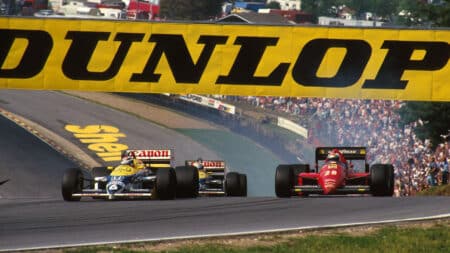
Brands Hatch: F1's beloved countryside amphitheatre
On this day in 1964, the roar of F1 engines echoed through the Kent countryside for the first time, as Brands Hatch made its debut on the world stage
Formula 1 may recreate Brazilian GP excitement with procedurally decided restarts late-on during a race.
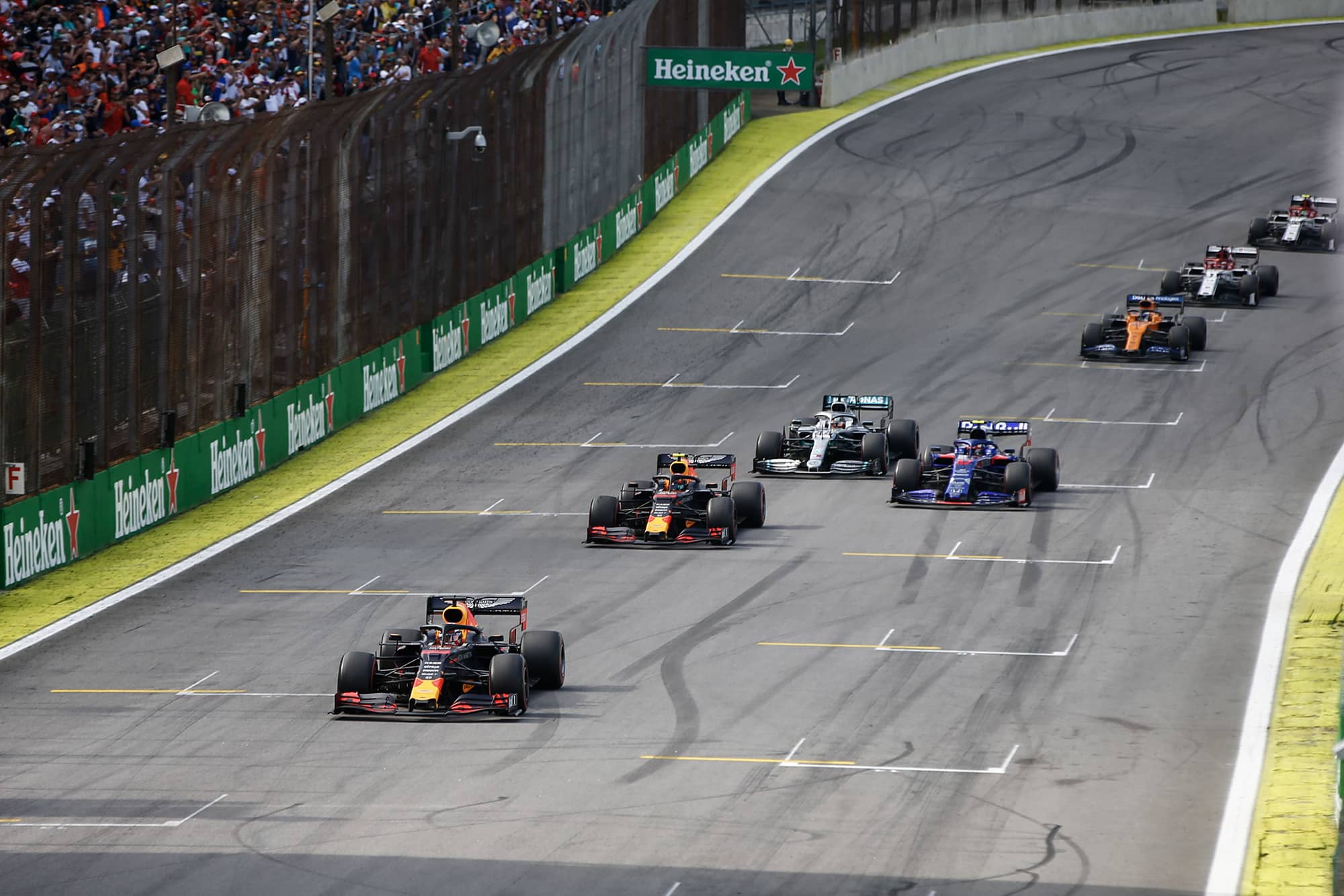
Max Verstappen controls the final restart Photo: Motorsport Images
Formula 1 is looking at introducing artificial late-race restarts after the dramatic final laps of last weekend’s Brazilian Grand Prix.
A NASCAR-style format, where cars are bunched up before the finish is being examined, said Ross Brawn, F1’s managing director of motor sport.
Writing in his post-race column, Brawn said that officials were looking at ways of recreating the Brazilian spectacle, where two safety cars compressed the field and provided the catalyst for frenetic wheel-to-wheel racing, bold overtaking and spectacular misjudgements.
The unpredictable finish saw Pierre Gasly take a first-ever podium place and Carlos Sainz later awarded third.
Related content
“It was an exciting and fascinating re-start which will be analysed very carefully, as the closeness of the pack in the seconds leading up the green flags resulted in a thrilling spectacle as drivers jockeyed for position and where the slightest advantage proved decisive,” wrote Brawn.
“Examining the possibility of procedurally recreating those conditions in future is an interesting concept and one that will undoubtedly be explored in the coming period.”
Brawn and F1 have been looking at ways of making races less predictable, but have come up against opposition. Last month Brawn abandoned plans to hold reverse-grid qualifying races after ridicule from drivers and disagreement from some teams.
If F1 was to recreate conditions similar to those seen at Interlagos, a format similar to NASCAR could be the direction most alike in motor racing currently.
NASCAR’s Chase format employs a stage racing model. Races are split into three portions, with two artificial yellow flags or cautions thrown during the first half of the race.
The cautions bring the field back together to promote close racing under rolling restart conditions, though yellow flags are only thrown for genuine hazards in the final half.
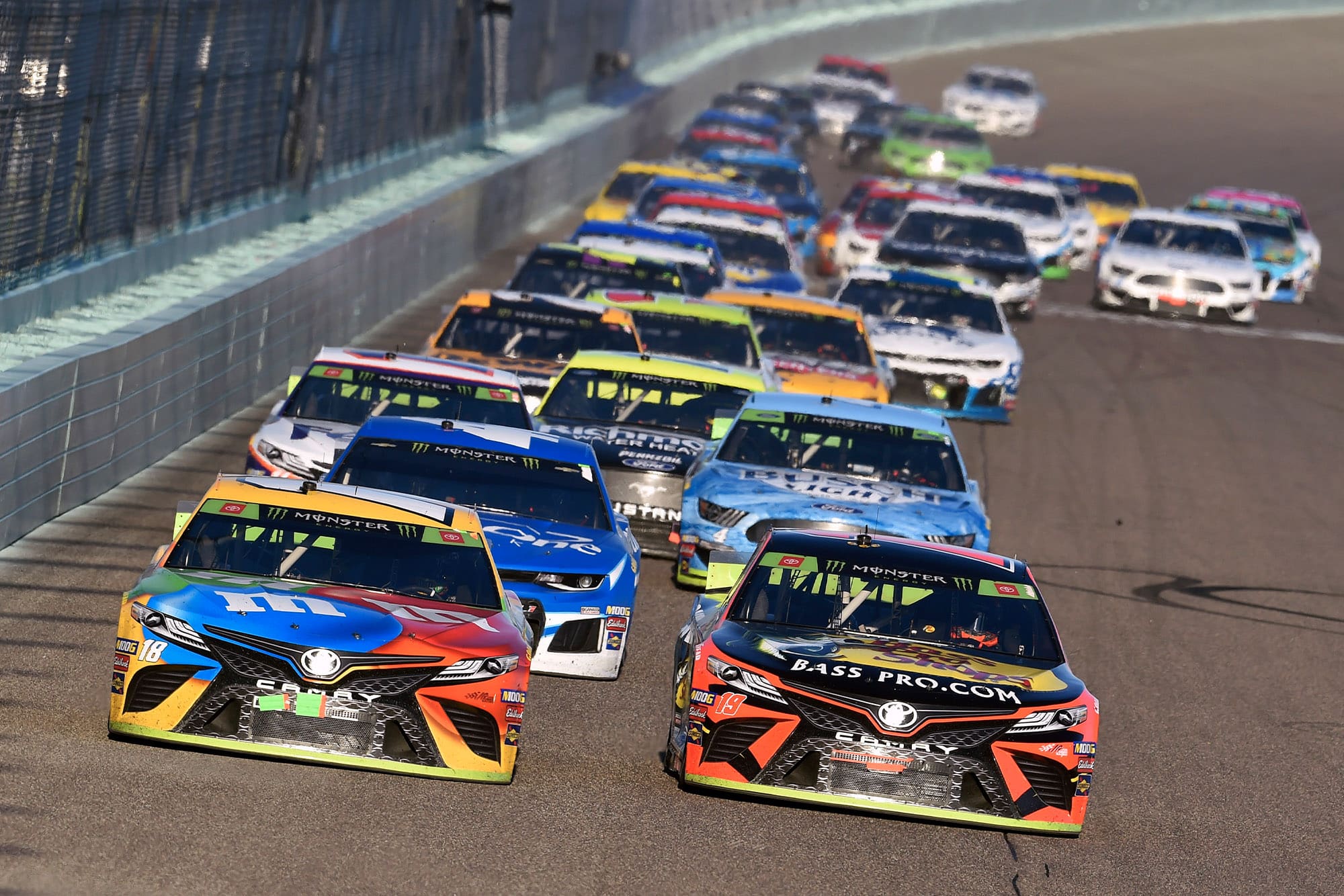
NASCAR’s stage format could provide F1 with the excitement Brawn is after Photo: Motorsport Images
Drivers within the top 10 as the stage ends are awarded stage points for their position.
Should the time taken to initiate a restart exceed the number of laps remaining in the race, a ‘green-white-chequer’ shootout is staged until a winner is decided regardless of over-running the scheduled race distance.
Brawn also highlighted Max Verstappen’s masterfully handled late restart. The Red Bull driver held the pack until halfway down the start/finish straight before leaping into a lead, preventing those behind from generating momentum and a tow.
“He was particularly strong at the second restart, when he slowed the field right down with the aim of ensuring no one would be able to slipstream past him and snatch victory.”

On this day in 1964, the roar of F1 engines echoed through the Kent countryside for the first time, as Brands Hatch made its debut on the world stage

Nico Hülkenberg's long-awaited first podium at Silverstone came after a virtuoso drive, but it only came about thanks to one unforgettable qualifying lap in 2020, as Mark Hughes recalls
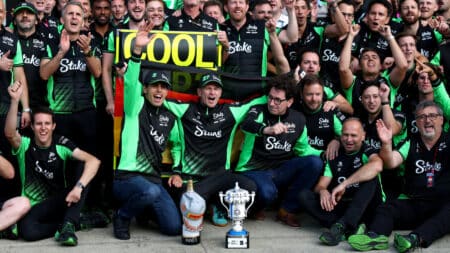
Nico Hülkenberg's first F1 podium followed a faultless British GP drive where he went against his team with strategy calls that proved crucial in wet weather at Silverstone. Here are the radio messages that show how he pulled it off
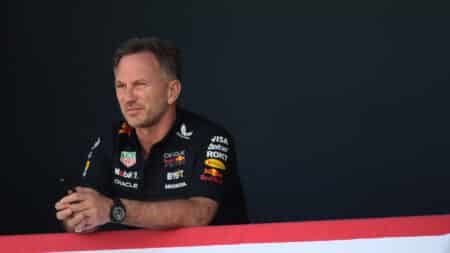
From shock Zoom calls to ruthless midnight firings, F1’s history is littered with team principals and executives who are in command one moment and unceremoniously sacked the next